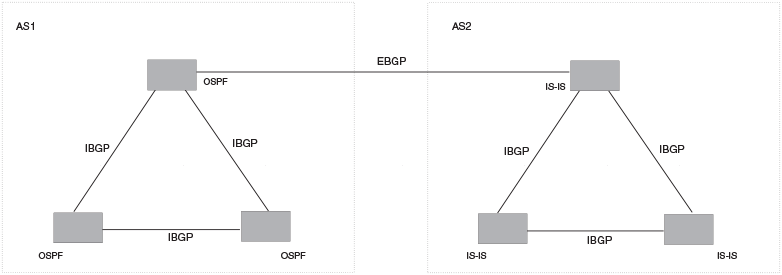BGP4 Overview
Border Gateway Protocol version 4 (BGP4) is an exterior gateway protocol that performs inter-autonomous system and inter-domain routing.
- Inter-autonomous system routing, called Exterior BGP (eBGP)
- Intra-autonomous system routing, called Interior BGP (iBGP)
BGP peers in different autonomous systems (AS) use eBGP. Within an AS, BGP can be used to maintain a consistent view of network topology, to provide optimal routing, or to scale the network.
Devices in the same AS use different Interior Gateway Protocols (IGP), such as IS-IS and OSPF, to communicate with one another. In an AS, BGP can be used to maintain a consistent view of network topology, to provide optimal routing, and to scale the network.
As a path vector protocol, BGP treats each AS as one point on the path to a given destination. For each route (destination), BGP maintains the AS path and uses this information to detect and prevent loops between autonomous systems.
BGP4 is the standard Exterior Gateway Protocol (EGP) used by Internet devices and is the EGP implemented on SLX-OS devices.
The following diagram is a simple example of two BGP4 autonomous systems, AS1 and AS2. Each system contains three BGP4 devices. To communication in their system, devices use iBGP. To communicate to the other system, devices use eBGP. Notice that each device also runs an IGP. The devices in AS1 run OSPF and the devices in AS2 run IS-IS. The devices can be configured to redistribute routes among BGP4, IS-IS, and OSPF. They also can redistribute static routes.


